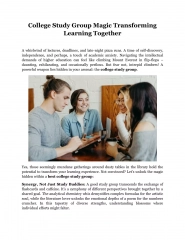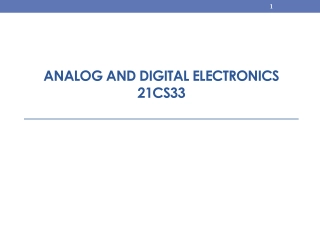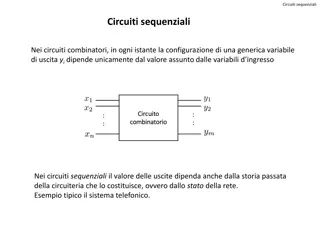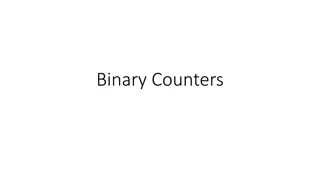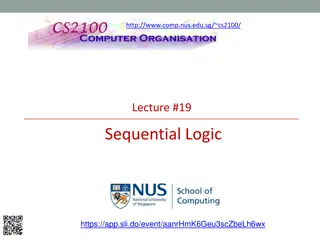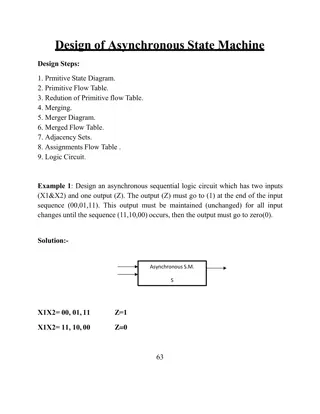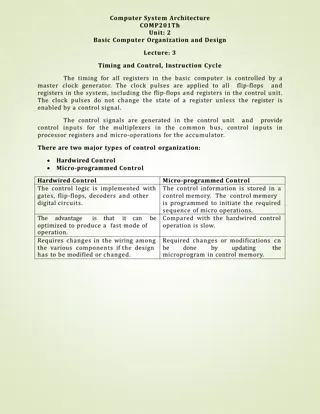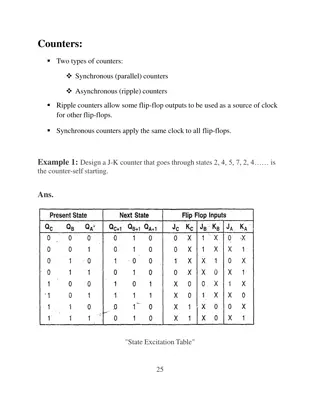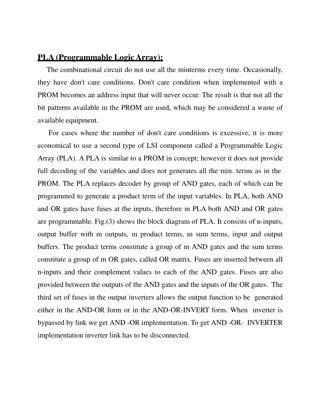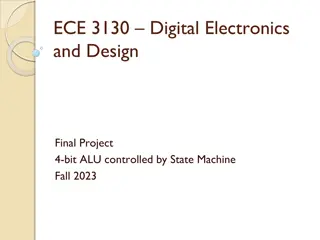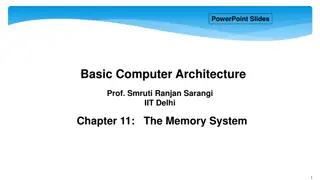FLIP FLOPS
In digital systems, flip flops are fundamental elements for memory storage, requiring sense amplifiers and decoders for operation. This content covers various types of flip flops, including RS latch, clocked SR flip flop, and their functions in memory circuits. Basic latch designs are also explored, along with wider applications of flip flops in regenerative actions and restoration processes. Additionally, tips for presenting slides in widescreen format are provided for optimal viewing experiences.
Download Presentation

Please find below an Image/Link to download the presentation.
The content on the website is provided AS IS for your information and personal use only. It may not be sold, licensed, or shared on other websites without obtaining consent from the author.If you encounter any issues during the download, it is possible that the publisher has removed the file from their server.
You are allowed to download the files provided on this website for personal or commercial use, subject to the condition that they are used lawfully. All files are the property of their respective owners.
The content on the website is provided AS IS for your information and personal use only. It may not be sold, licensed, or shared on other websites without obtaining consent from the author.
E N D
Presentation Transcript
FLIP FLOPS INEL 4207 Material for test 4 Gladys O. Ducoudray
Flip Flops are the basis for memory For memory we need FlipFlops Sense amplifiers Decoders Figure 15.11 A 2M+N -bit memory chip organized as an array of 2M rows 2N columns.
Basic Latch Figure 16.1 (a) Basic latch. (b) The latch with the feedback loop opened. (c) Determining the operating point(s) of the latch.
RS Latch R S Qn+1 Qn 1 0 0 0 1 1 0 0 1 1 Not used
Function of Flip Flop Assume Q=0, Q =1 0 1 Clock and S toggles high 1 Q is pulled down 0 1 voltage at Q increases Fig. 16.4 CMOS implementation of a clocked SR flip-flop. The clock signal is denoted by .
Function of Flip Flop Q reaches critical point Vdd/2 Q reaches critical point Vdd/2 1 0 0 1 Fig. 16.4 CMOS implementation of a clocked SR flip-flop. The clock signal is denoted by .
Function of Flip Flop S toggles Low Regenerative action restore levels Vdd/2+ V 1 0 Vdd/2- V 1 0 0 1 Fig. 16.4 CMOS implementation of a clocked SR flip-flop. The clock signal is denoted by .
Widescreen Pictures Pictures can also be presented more dramatically in widescreen.
Slide Show Tips To present in true widescreen, you ll need a computer and, optionally, a projector or flat panel that can output widescreen resolutions. Common computer widescreen resolutions are 1280 x 800 and 1440 x 900. (These are 16:10 aspect ratio, but will work well with 16:9 projectors and screens.) Standard high definition televisions resolutions are1280 x 720 and 1920 x 1080. Use the Test Pattern on the next slide to verify your slide show settings.
Widescreen Test Pattern (16:9) Aspect Ratio Test (Should appear circular) 4x3 16x9


